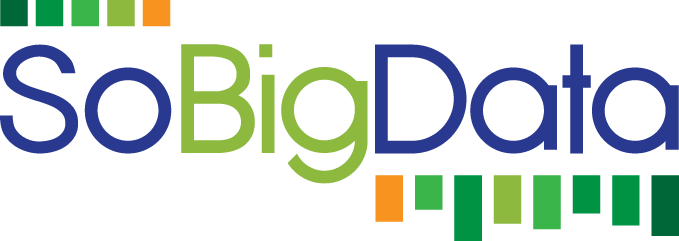SemEval 2019 recently launched the Hyperpartisan News Detection Task in order to evaluate how well tools could automatically classify hyperpartisan news texts. The idea behind this is that "given a news text, the system must decide whether it follows a hyperpartisan argumentation, i.e. whether it exhibits blind, prejudiced, or unreasoning allegiance to one party, faction, cause, or person."
Below we see an example of (part of) two news stories about Donald Trump from the challenge data. The one on the left is considered to be hyperpartisan, as it shows a biased kind of viewpoint. The one on the right simply reports a story and is not considered hyperpartisan. The distinction is difficult even for humans, because there are no exact rules about what makes a story hyperpartisan.
In total, 322 teams registered to take part, of which 42 actually submitted an entry, including the GATE team consisting of Ye Jiang, Xingyi Song and Johann Petrak, with guidance from Kalina Bontcheva and Diana Maynard.
The main performance measure for the task is accuracy on a balanced set of articles, though additionally precision, recall, and F1-score were measured for the hyperpartisan class. In the final submission, the GATE team's hyperpartisan classifying algorithm achieved 0.822 accuracy for manually annotated evaluation set, and ranked in first position in the final leader board.
Our winning system was based on using sentence representations from averaged word embeddings generated from the pre-trained ELMo model with a Convolutional Neural Network and Batch Normalization for training on the provided dataset. An averaged ensemble of models was then used to generate the final predictions.
The source code and full system description is available on github.
One of the major challenges of this task is that the model must have the ability to adapt to a large range of article sizes. Most state-of-the-art neural network approaches for document classification use a token sequence as network input, but such an approach in this case would mean either a massive computational cost or loss of information, depending on how the maximum sequence length. We got around this problem by first pre-calculating sentence level embeddings as the average of word embeddings for each sentence, and then representing the document as a sequence of these sentence embeddings. We also found that actually ignoring some of the provided training data (which was automatically generated based on the document publishing source) improved our results, which leads to important conclusions about the trustworthiness of training data and its implications.
Overall, the ability to do well on the hyperpartisan news prediction task is important both for improving knowledge about neural networks for language processing generally, but also because better understanding of the nature of biased news is critical for society and democracy.
The source code and full system description is available on github.
One of the major challenges of this task is that the model must have the ability to adapt to a large range of article sizes. Most state-of-the-art neural network approaches for document classification use a token sequence as network input, but such an approach in this case would mean either a massive computational cost or loss of information, depending on how the maximum sequence length. We got around this problem by first pre-calculating sentence level embeddings as the average of word embeddings for each sentence, and then representing the document as a sequence of these sentence embeddings. We also found that actually ignoring some of the provided training data (which was automatically generated based on the document publishing source) improved our results, which leads to important conclusions about the trustworthiness of training data and its implications.
Overall, the ability to do well on the hyperpartisan news prediction task is important both for improving knowledge about neural networks for language processing generally, but also because better understanding of the nature of biased news is critical for society and democracy.







